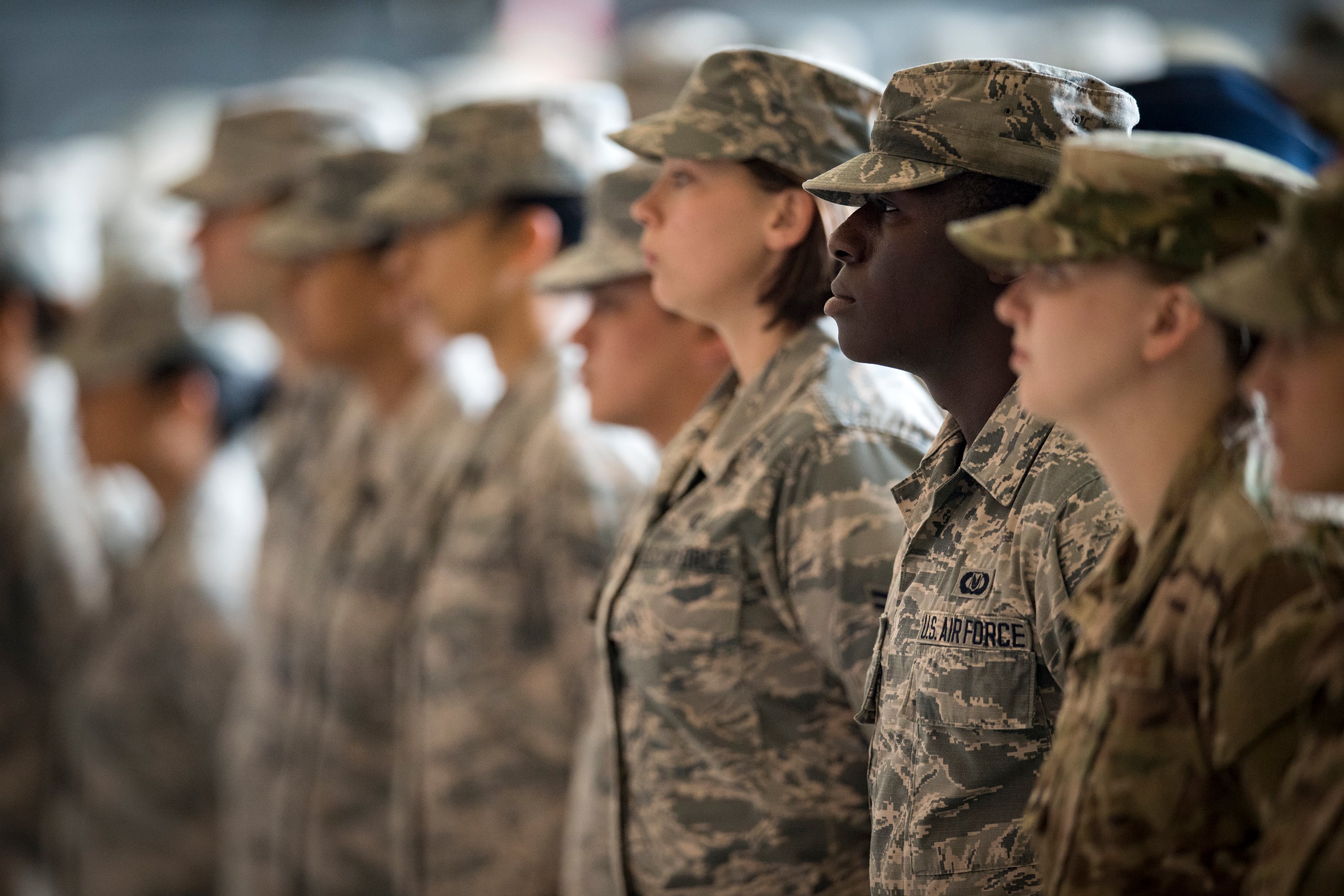The White House budget is calling for more troops with next year’s budget, but that hope is tempered by the reality that low national unemployment and a shrinking pool of young people interested in serving means it’s harder and harder to recruit.
The Pentagon’s fiscal year 2024 budget is calling for 2,074,000 men and women in uniform, according to documents released Monday. That number is 13,334 fewer than it was authorized for last year, but 12,355 more than the Defense Department estimates are currently serving, reflecting a recent recruiting and retention environment that has shown some gaps.
On paper, the military services are looking to downsize by 13,000 personnel positions in 2024. But as some of the services fell short in fully manning their ranks over the past year, the White House’s ask would add about 12,000 troops, if passed, and if the services can find enough people to fill their ranks.
The budget request aims to meet in the middle, DoD comptroller Mike McCord told Military Times, between what the services think they need to accomplish their mission and how many people they think they can attract and retain in a historically difficult recruiting environment, with the national unemployment at 3.6%.
“Recruiting at anytime in my lifetime would have been tough at this kind of unemployment level, where people have so many other options, especially the people that we want, right?” he said during a briefing. “We want talented people, people with drive, people with high school degrees, etcetera, people with technical skills ― so that that’s going to be a challenge. And that is sort of reflected here.”
Overall, the defense budget request totals $842 billion, a 3.2% increase from 2023, much of that coming from procurement and modernization programs, with the size of the military remaining mostly stable.
In addition to a competitive job market, military leaders have said much in recent months about the dwindling pool of young Americans qualified for military service, with an even smaller slice of those even interested in serving.
“But overall a fairly stable picture on the size of the military, and we’re about capability in this budget,” McCord said.
RELATED

But, McCord added, retention is “incredibly strong,” which has taken some of the pressure off the services to bring in new troops.
The Army, which has grabbed the most headlines in recent years for its recruiting shortfalls, is asking to cut 2,200 from its ranks this year, though entirely from the Army Reserve. The active component and National Guard will stay stable if the budget request is approved, after a period of fluctuation following the Army’s push to get to 500,000 active duty soldiers and a course correction when that number proved unachievable.
But the numbers show that during 2023, the Army was able to hold steady, meeting its authorized manning level of 954,000 soldiers.
The other services showed varying shortfalls, though DoD’s numbers are a projection, as manning ebbs and flows throughout the year.
The Navy is requesting funding for 404,200 sailors in 2024, which is a drop from the 411,000 Congress funded last year, but a rise in the roughly 398,000 manned billets in 2023.
The Marine Corps is also drawing down a bit, on paper, going from 210,000 authorized Marines to 205,900. Their estimated actual manning for 2023 is 205,217, so the budget request would bump them up by just under 700.
And the Air Force and Space Force, which cut about 6,000 positions in 2023, is looking to stay roughly flat in terms of limits: 512,000 airmen and guardians, give or take. But that request, if they can meet their end strength cap, would mean about 7,600 more troops, as DoD estimated a manning shortfall through 2023.
Though the Army has spoken the most about its recruiting challenges, McCord added, all of the services have been feeling strain. To meet 2022 goals, for example, the services dipped into delayed-entry candidates they planned to ship to basic training in 2023, creating another gap to plug this year.
Funding boost
While the budget request is a drop from last year’s levels, the Pentagon is asking for $6.7 billion more than last year to pay for military personnel. This includes a 5.2% pay raise, money to increase basic allowance for housing levels and fund the new basic needs allowance.
RELATED

There is also, according to McCord, funding to cover more reimbursements for permanent change-of-station moves, universal pre-kindergarten for all DoD schools and guaranteed reduced prices at commissaries, which have been less competitive with off-base stores in recent years thanks to insufficient funding and inflation.
There are also dollars set aside for the roll-outs of two big personnel initiatives, aimed at reducing the rates of sexual assault and suicide among service members.
The Pentagon in 2021 approved a plan to implement more than 80 recommendations from an independent review commission on sexual assault, including hiring professional, dedicated staff to work on prevention training and the response process, and to stand up an independent prosecutor’s office to make decisions about adjudicating crimes.
In February, another independent review commission, this one looking at DoD suicide prevention policy, published a spate of recommendations that DoD is now considering. A working group now has until late May to make recommendations on how and whether to implement those ideas.
There aren’t yet number figures to pin to these initiatives, as the Pentagon has not released its full budget overview, which is expected later this month.
Meghann Myers is the Pentagon bureau chief at Military Times. She covers operations, policy, personnel, leadership and other issues affecting service members.




